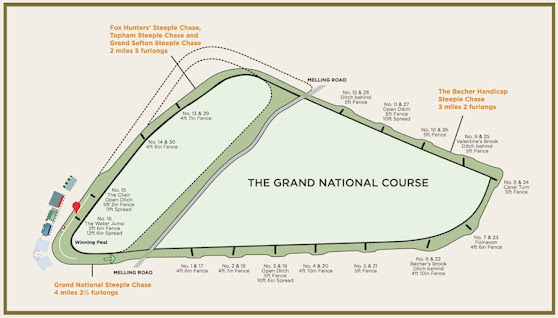Furlong (pronounced fur-lawng or fur-long)
A unit
of distance, equal to 220 yards (201.168 m) or ⅛ mile (0.2 km).
Pre 900: From the Middle English from the Old English furlang
or furh (length of a furrow), the construct being was furh (furrow) + lang (long). The Middle English was forwe or furgh, the Old
Frisian furch, the Old High German fur(u)h and the later German frche.
In Latin porca was the ridge
between furrows. For over a thousand
years, accepted abbreviation has been fur.
Now used exclusively (though usually informally) in horse racing, the furlong had the same ad-hoc origin as much of the old English units of weights and measures (codified in 1925 as the Imperial System which replaced the Winchester Standards (1588-1825) and in official use in the British Empire from 1926). The furlong (220 yards, 201.168 m) was based on the length of an average plowed furrow (hence “furrow-long,” or furlong) in the old English common-field (sometimes called open and typically of 10 acres) system. Each furrow ran the length of a 40 × 4-rod acre (660 feet).
The standardization of linear units such as the yard, foot, and inch was undertaken by governments between 1266-1303, taking what were the historically acknowledged sizes of rods, furlongs, and acres as fixed and simply defining them as the newly standardized units. Thus, the furlong, often measured as 625 northern (German) feet, became 660 standard English feet, and the mile, always 8 furlongs, became 5,280 feet. The medieval origins of what became the Imperial System of weights and measures was based often on the capacity of man and beast, reflecting the priorities of the time, a furlong the distance a team of oxen could plough without resting and an acre the amount of land tillable by one man behind one ox in one day.
Grand National Course, Aintree Racecourse, Liverpool
Furlong was used from the ninth century to translate the Latin stadium (625 feet), one-eighth of a Roman mile, thus the English word came to be understood as "one-eighth of an English mile". This meant the English mile was different in length from the Roman one but this had surprisingly few practical consequences because the mile was so rarely used in legal documents. By comparison, furlong became one of the standard measures in property titles and land deed records. For that reason it was the mile and not the furlong which was redefined during the reign of Elizabeth I (1533–1603; Queen of England and Ireland 1558-1603).
Although the UK has substantially abandoned the use of imperial measures, they remain substantially in use in the US, Myanmar (Burma) and Liberia although industrial use in the US has long switched to metric. Having "got Brexit done", Prime-Minister Boris Johnson (b 1964, UK prime-minister since 2019), freed from the oppression of bureaucrats in Brussels, recently permitted nostalgic grocers again to price their products in pounds and ounces alongside kilograms and grams, a human right long denied by EU diktat. Other hold-outs include international aviation which is a mix, aircraft now all made with metric measurements (although in casual use, wingspans etc are often spoken of in imperial) yet fuel loads are measured exclusively in kilograms and altitude always in feet (and all radio communication is English, reflecting the influence of the US in the 1940s when the regulations were drafted). That may also explain why computer monitors are still measured in inches are are the wheels of cars (despite the occasional efforts of the French to nudge this niche to things metric).

No comments:
Post a Comment